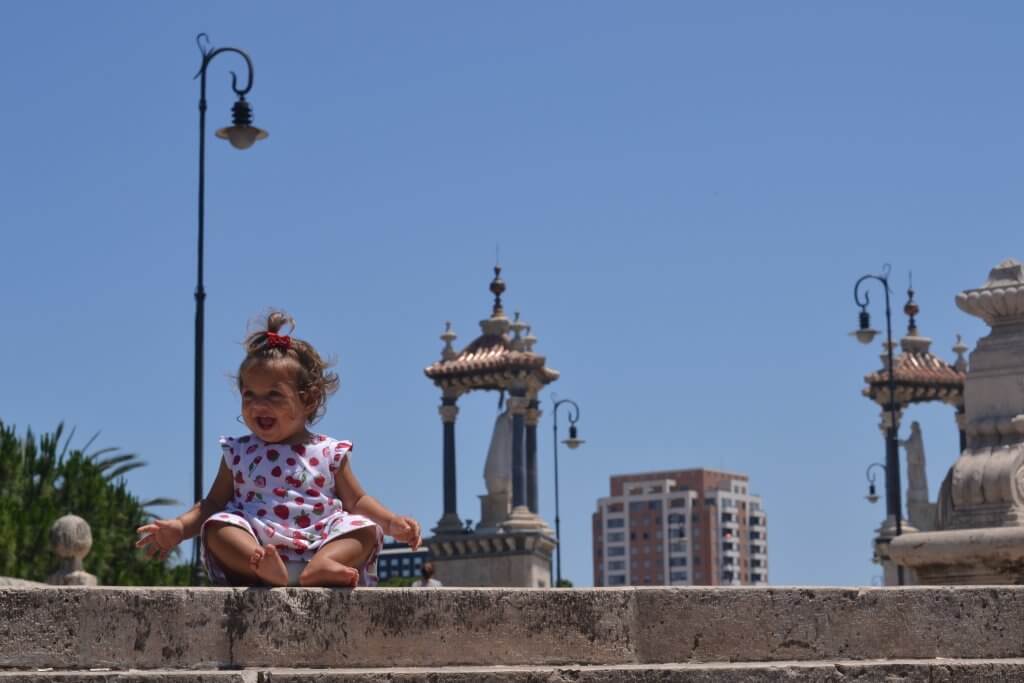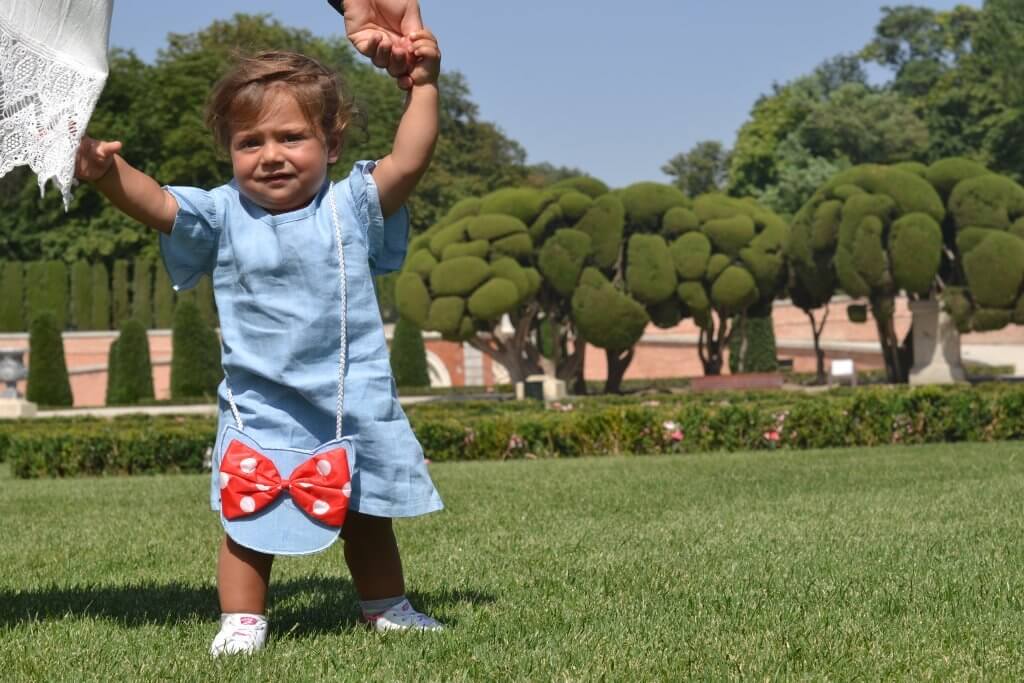The history of flamenco: a journey into Spanish tradition for kids and adults
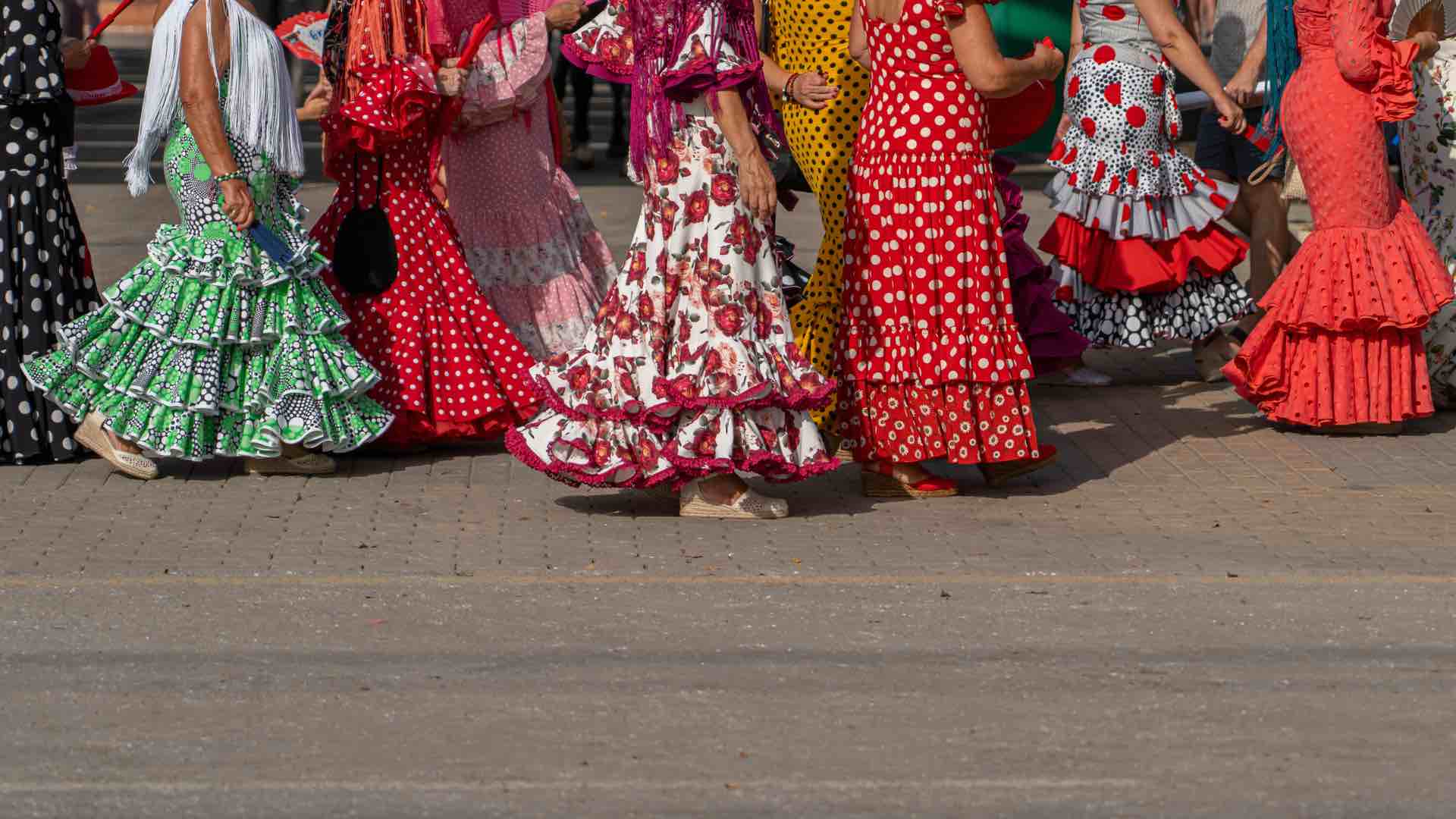
“Mum, what is it? Can you tell me the story of Flamenco?”
Here we are, walking along the seafront in Garrucha, on one of those rare afternoons where the scorching heat has given way to a light breeze. We start strolling, hunting for ice cream, when Giulia spots an ad for a Flamenco night.
“Mum, did you know that Flamenco means flamingo, which means flamingo?”
Giulia’s questions always come up at the most unexpected times, persistently.
Of course, I didn’t know that.
Doing Edutainment while traveling also means answering kids’ questions anytime… so here I am, quickly checking Google to figure out what’s true and what’s not, and studying the origins of Flamenco to give Aldo and Giulia the most accurate version, tailored to them.
Obviously, she was right!
That evening, after a more in-depth search, I explained the story and the origins of Flamenco to her.
Introduction to Flamenco: an ancient art that enchants the whole family
Flamenco is much more than just a music and dance performance; it’s an art that has deep roots in Spain’s culture and history. This tradition, which has captivated generations around the world, is especially exciting to discover while traveling with kids, as it combines rhythm, passion, and deep emotional expression.
Though the origins of flamenco are lost in Spain’s history, it’s certain that this dance originated from the country’s most troubled and persecuted peoples—the Gypsies, Moors, and Jews—and emerged from the lower classes of Andalusia. It wasn’t until 1980 that flamenco was included in music conservatory studies, and in 2010, UNESCO declared it a World Intangible Cultural Heritage.
The etymology of the name is also uncertain. Some say it comes from the Arabic ‘felag mengu,’ meaning ‘fleeing peasant’ or ‘landless peasant,’ a term fitting for the Muslims and Jews who moved to escape the Inquisition or to emigrate.
Other theories link it to Flanders (flamenco also means “Flemish” in Spanish), believed to be the Gypsies’ homeland, or to the word flameante (flaming), referring to the performers’ intensity or the dancers’ flamboyant costumes.
Flamenco includes music (there are over 50 musical styles, called palos), singing, but dance is the most recognizable expression of this art. Besides theaters, Flamenco shows can be seen in ‘tablaos’, typical Spanish venues where people often dine or drink while enjoying live performances with 2-3-person choreographies or solo improvisations. In flamenco dance, there are body and arm movements called “braceo” and foot tapping, “zapateo”.
Flamenco shows are some of the most fascinating and folkloric experiences to attend, sure to delight both kids and adults.
What is Flamenco?
Flamenco is an artistic expression that combines music, singing (cante), and dance (baile). Born in the lands of Andalusia, in southern Spain, flamenco represents the blend of Gypsy, Arab, Jewish, and Christian cultures that have mingled over centuries.
It is characterized by intense rhythms, dynamic movements, and a unique expressiveness that captivates the audience’s soul.
Where does the name Flamenco come from?
The term “flamenco” has uncertain origins, but one of the most widespread theories is that it comes from the Spanish word for “Flemish” (flamenco), referring to Spanish Gypsies who were called that in the 16th century.
Other theories suggest the name might be tied to Arabic terms or the word “flama,” meaning “flame,” a reference to the dance and song’s intensity and passion.
Another connection not to overlook is the flame’s red color, possibly describing the skin color of the Flemish (reddish) in contrast to the darker-skinned Spanish people.
Finally, there’s also “Giulia’s theory,” which isn’t that far-fetched. Many scholars trace the term flamenco to the English word “Flamingo,” which in Spanish has the same translation.
Where is Flamenco popular?
Although flamenco’s roots are in Andalusia, today this art is spread throughout Spain and beyond. The cities of Seville, Granada, and Jerez de la Frontera are considered flamenco capitals, but high-quality performances can be found in many other parts of the country. Additionally, flamenco has gained international popularity, with schools and performances attracting enthusiasts from around the world.
Origins of Flamenco: how this iconic dance and song were born
The origins of flamenco date back centuries, intertwining with the history of various cultures that have influenced the Andalusian region. This iconic style of music and dance emerged from the meeting of popular traditions, sounds, and movements that tell stories of life, suffering, joy, and passion.
The Flamenco's cultural roots: a mosaic of influences
Flamenco is the result of a rich cultural mosaic. Its roots can be traced to the musical and artistic traditions of the Gypsies (Romani), Arab influences during the Moorish rule, elements of Sephardic Jewish music, and Andalusian folk melodies. These influences combined in the courtyards, taverns, and squares of Andalusia, creating a unique and deeply emotional art form.
Flamenco tradition: a dance that tells the story of Spain
Flamenco is not just an art form; it’s a symbol of Spanish history and culture. Every dance step, every guitar chord, and every sung verse reflect the struggles and celebrations of a people who have lived through centuries of social and cultural changes.
From Andalusia to the world: flamenco's rise
Born in the rural communities of Andalusia, flamenco quickly gained popularity, first among the lower classes, then among Spanish nobles, and eventually worldwide. In the 19th century, with the birth of “cafés cantantes,” flamenco became a national phenomenon. Since then, it has spread beyond Spain’s borders, becoming a symbol of Spanish culture and one of the most beloved and recognized art forms globally.
The history of Flamenco music: Notes and rhythms that speak to the heart
Flamenco music is a sonic journey that reflects the soul and passion of Spanish culture. Every melody, every rhythm is filled with history and emotion, telling stories of joy, sorrow, love, and everyday life. This musical tradition has constantly evolved, while always keeping its essence alive, and continues to enchant anyone who enters its world.
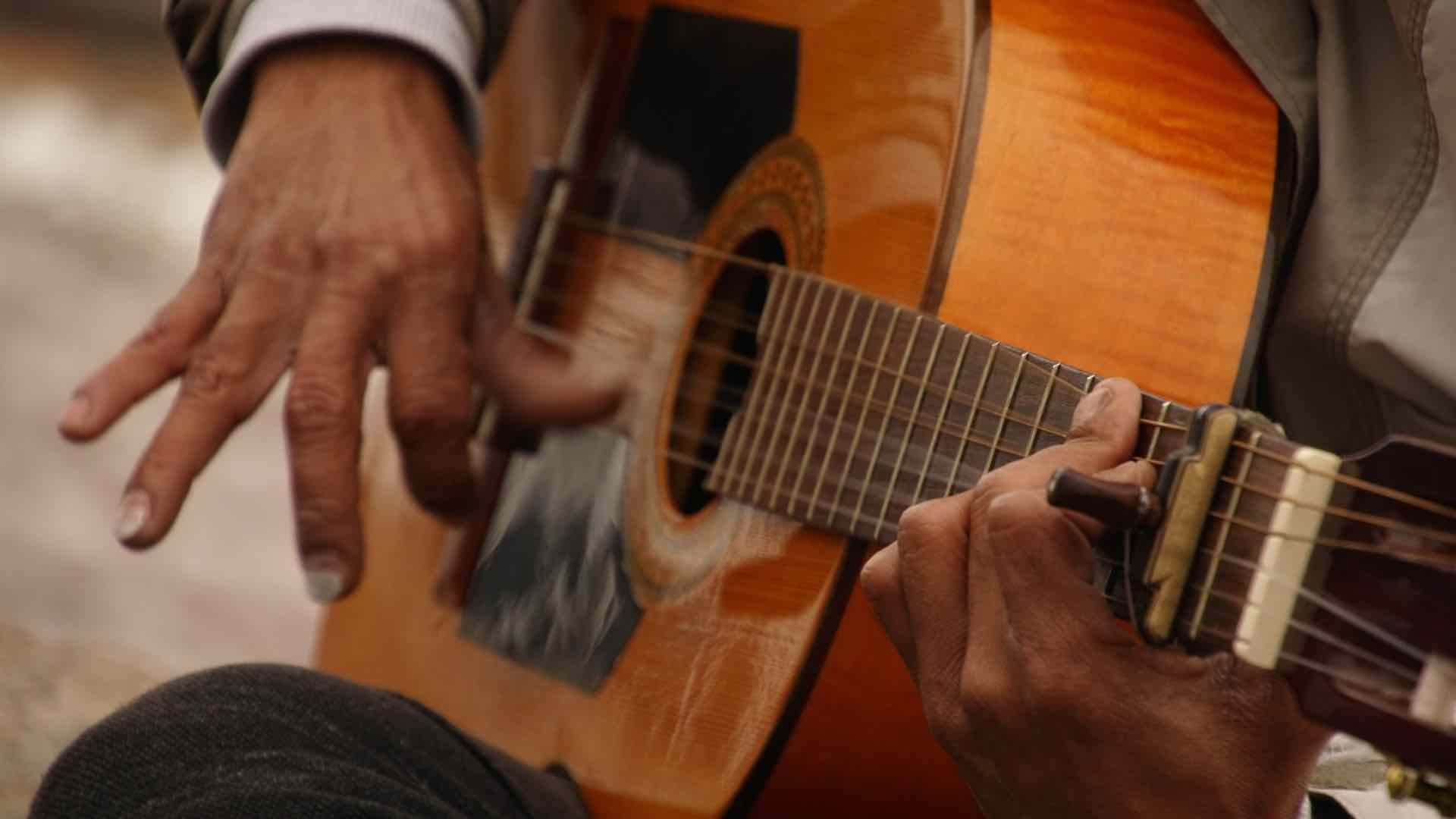
The evolution of Flamenco: how music and dance have changed over time
Flamenco has undergone numerous transformations over the centuries, evolving from a popular form of expression to an internationally recognized and celebrated art. Initially, flamenco music was a spontaneous and informal expression, performed in homes and within the Romani communities. Over time, especially from the 19th century onwards, flamenco began to be performed in “cafés cantantes,” where the structure of the music and dance started to formalize.
In the 20th century, flamenco saw the influence of new styles and the fusion with different genres like jazz and classical music. This evolution led to the birth of new flamenco styles, while still retaining its traditional roots. Even today, flamenco continues to evolve, with contemporary artists experimenting with new forms without losing sight of the deep roots of this art.
The great Flamenco masters: who shaped its history
The history of flamenco has been shaped by great masters who left an indelible mark on this art. Among the most famous are Paco de Lucía, a flamenco guitar genius who brought this genre to an international level, and Camarón de la Isla, the legendary singer who revolutionized cante jondo with his powerful and charismatic voice. Dancers like Antonio Gades and Sara Baras have also contributed to popularizing flamenco worldwide through their extraordinary talent and ability to convey emotions through dance.
Flamenco in Spain: where to experience the authenticity of this art
Spain is the birthplace of flamenco, and there’s no better place to experience the authenticity of this art. Andalusia, in particular, is the beating heart of flamenco, with cities like Seville, Granada, and Jerez de la Frontera offering unique opportunities to immerse yourself in this fascinating world. From traditional tablaos to summer festivals, Spain offers endless opportunities to discover flamenco in its most authentic form.
The best places to experience Flamenco while traveling with kids
Traveling to Spain with kids is a perfect opportunity to introduce them to flamenco culture in a fun and engaging way.
- In Seville, you can visit the “Casa del Flamenco,” a welcoming venue that hosts shows suitable for children, with music and dance that will capture their attention.
- Granada offers a magical experience with flamenco performances in the caves of the Sacromonte neighborhood, a captivating setting that will enchant the whole family. Finally, in Jerez de la Frontera, you can experience the thrill of flamenco during the “Feria del Caballo,” a festival that combines music, dance, and equestrian traditions, offering a unique cultural experience for both adults and children alike.
Discover Flamenco while traveling: an unforgettable experience for the family
Flamenco is one of the most exciting cultural experiences Spain has to offer, and sharing it with your kids can turn the trip into an unforgettable adventure. The vibrant colors, mesmerizing rhythms, and passion expressed in every movement of the dance and music will capture the attention of the entire family, making a flamenco night a special moment to remember.
Why a Flamenco evening will delight your kids
A flamenco night is much more than just a show—it’s a sensory experience that involves everyone, from adults to children. Kids will be fascinated by the colorful costumes and energetic movements of the dancers, while the rhythm of the palmas (hand clapping) and zapateados (foot stamping) will make them feel like part of the performance. Additionally, the live music, featuring guitars, passionate singing, and percussion, stimulates the imagination and keeps kids engaged, making the experience both entertaining and enjoyable.
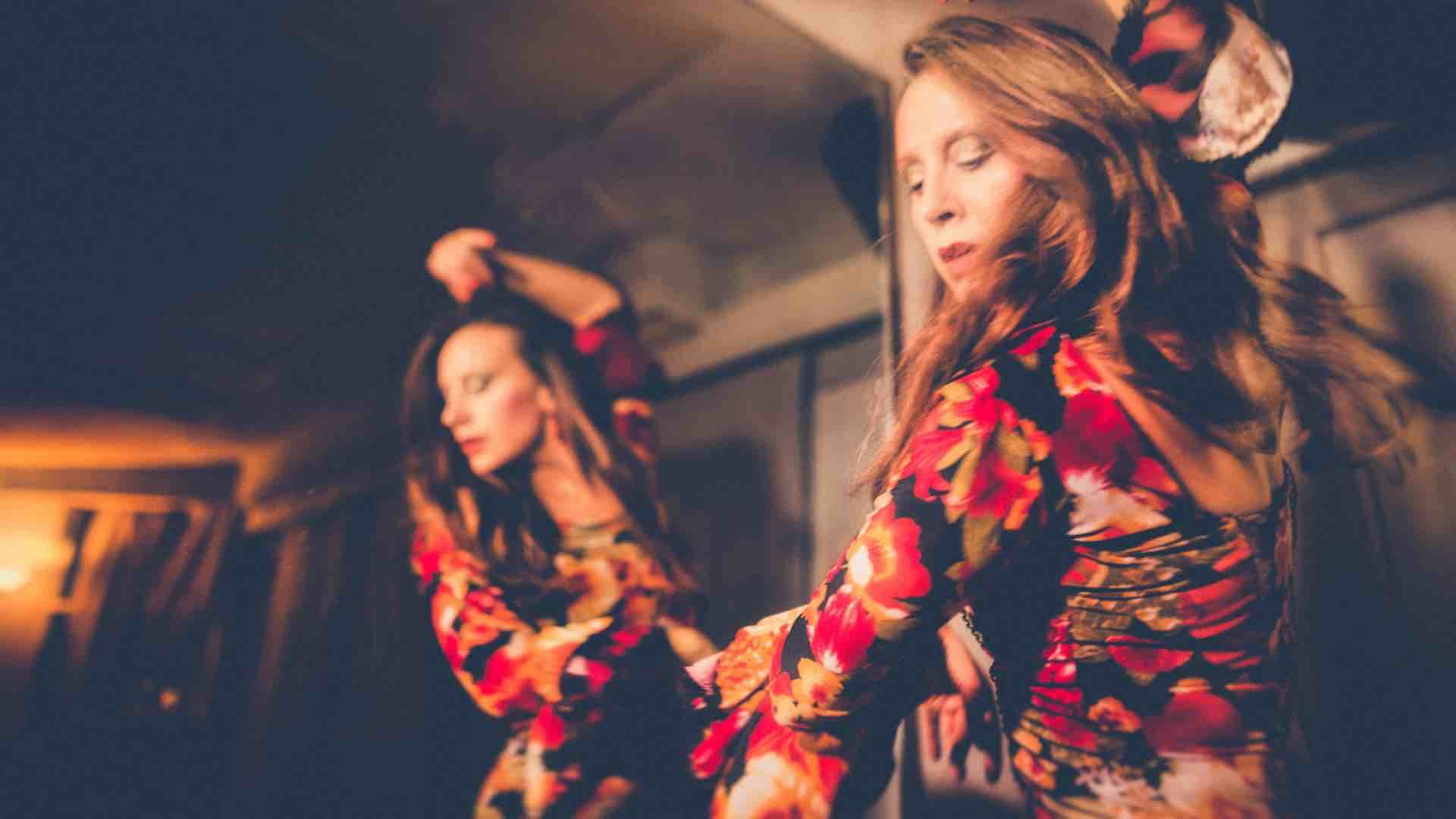
Tips for enjoying the show as a family
To ensure that the experience is enjoyable for everyone, here are a few practical tips:
- Choose the right show: Opt for performances lasting about an hour, ideal for keeping children’s attention. Many tablaos offer family-friendly shows at more convenient times.
- Book in advance: Make sure to book your seats early, choosing a table close to the stage so that your children can see the action up close and feel more involved.
- Prepare the kids: Before the show, tell your children what flamenco is, perhaps showing them some videos or listening to flamenco music together. This will help them better understand what they’ll see. We even explained the origins and history of flamenco to our kids because we strongly believe that traveling should also be about learning.
Where to take kids to see flamenco: the best places in Spain
When traveling in Spain with your kids, choosing the right place to watch a flamenco show can make the difference between a fun evening and an extraordinary cultural experience. Depending on which part of Andalusia you’re visiting, make sure to seek out an authentic show, preferably away from mass tourism.
My advice is to avoid the typical tourist shows and instead look for local village festivals where you’re more likely to have a more authentic (and often free) experience. If you want to check the calendar of Spain’s most famous and folkloric festivals, here’s a direct link: https://www.topschoolinspain.com/it/attivita/feste-locali-in-spagna/ to help you plan your itinerary.
Explore Spain by following the most authentic flamenco spots
Andalusia, the birthplace of flamenco, offers numerous routes for those who want to deepen their knowledge of the dance.
Flamenco itineraries in Andalusia
Where to see flamenco in Seville
Among the must-visit places for those exploring this Spanish region, rich with Arab influence and almost magical charm, is Seville, Andalusia’s capital with a distinct ‘personality’. Don’t miss the Giralda, the bell tower and former minaret, Spain’s largest cathedral, and the Alcázar, Arab fortresses and royal palaces with magnificent gardens. These three monuments were declared UNESCO World Heritage Sites in 1987. Surrounding them are the characteristic neighborhoods of Santa Cruz and Arenal, which preserve the Moorish-era layout with narrow, winding streets, irregular squares, and low houses with spacious, elegant patios. Closer to the Guadalquivir River is the Triana district, one of the cradles of flamenco.
One of the nightlife hubs in Seville is the Santa Cruz district, known for its traditional taverns and a wide range of bars and clubs. The Triana area is home to many bars with live music, including the iconic “flamenquita.” During the summer, people flock to the riverbanks, where bars, kiosks, and open-air terraces spring up along the Guadalquivir, offering relief from the heat, especially between Maria Luisa Park and Barqueta Bridge. As night falls, the sound of castanets and Andalusian guitars fills the streets of Santa Cruz, where impromptu flamenco dancing often takes place. Among the best venues for flamenco shows is La Carbonería, located at Calle Levíes 18 in the Judería district. The performance starts at 10 PM, with free admission, and a beer or glass of wine costs about €3. If you’re not into touristy shows but love flamenco, I recommend visiting the Casa de la Memoria, on Calle Ximenez de Enciso 28 in Santa Cruz. Here, you’ll discover the cultural essence of flamenco and its deep ties to Seville and Andalusia. The entrance fee is affordable, and performances take place in a charming patio on a beautiful little street.
Where to see flamenco in Granada
Another gem of Andalusia is Granada, home to the magnificent Alhambra, the walled Arab citadel on the Sabika hill, which draws visitors from all over the world. Tourists queue up early in the morning (it’s essential to book in advance!). Strolling through the enchanting gardens feels like entering another dimension. Granada plays a key role in the history of flamenco: the Sacromonte, with its caves carved into the rock, is the city’s gypsy neighborhood. It’s also crucial to visit the Albaicín district, home to the oldest ‘peña’ (flamenco enthusiasts’ club), Plateria, where you can attend scheduled performances. Also worth a visit is the tavern of Jaime el Parrón, where many of the city’s artists gather.
Where to see flamenco in Cadiz
Let’s head even further south, to the edge of Europe and the Mediterranean, to visit Algeciras, the birthplace of the great guitarist Paco De Lucía, who was born in the humble El Rinconcillo neighborhood at 7 Calle San Francisco. In the neighborhood square, there’s a statue of the maestro, and the town’s conservatory is also named after him. If you head to Morón de la Frontera, you’ll find strong flamenco influences at the Los Alemanes tavern, a venue where many ‘flamenco’ parties took place. Flamenco lovers should also visit Jerez de la Frontera, on the Bay of Cadiz, the home of bulerías, the most festive and wild style of flamenco.
One of the most interesting places here is the Arco de Santiago, a bar frequented by flamenco musicians who discuss guitars and singers. In the evening, theory turns into practice at the flamenco club “Manuel Morao y Gitanos de Jerez”, where performances are held on request. Must-visits for enthusiasts are the Centro Andaluz del Flamenco, located in Pemartín Palace, and the Cátedra de Flamencología: two key centers for studying flamenco guitar, with rich archives.
Where to see flamenco in Córdoba
In Andalusia, you can’t miss a visit to Córdoba, which was once the capital of the Muslim empire in Spain and is still the Andalusian city where the Muslim past is most visible. Its imposing mosque-cathedral (the Mezquita) symbolizes the fusion between the Arab-Islamic and Catholic-Western aspects of Andalusia. The endless ‘forest’ of columns inside this masterpiece of Islamic architecture in Europe is a sight that stays with you forever. The Mezquita’s uniqueness also comes from the fact that Renaissance, Gothic, and Baroque styles were added to the beautiful Muslim structure. However, your senses will be even more captivated by the intense atmosphere if you happen to witness one of the Holy Week processions, which start from the immense cathedral. Despite the many tourists, the strong participation of the locals creates an unforgettable and thrilling experience!

FAQ on flamenco history: everything you need to know
What is the history of flamenco and where does it come from?
Flamenco originated in Andalusia, a region of Spain, and is an art form that combines music, dance, and singing.
How has flamenco evolved over time?
Flamenco has undergone many changes, incorporating various cultural and musical influences while always retaining its traditional essence.
Are flamenco shows suitable for kids?
Absolutely! A flamenco evening can be captivating for kids as well, thanks to the engaging music and colorful costumes.
Where can I experience flamenco while traveling with my family?
Spain, especially Andalusia, is the best place to immerse yourself in flamenco tradition. There are family-friendly shows and restaurants, but I always suggest sneaking into a local village festival for a truly authentic experience!
With this article, I’ve told you everything—absolutely everything—you need to know about the history of flamenco. These are details you can even share with your kids to answer their questions about this authentic experience, which you should live at least once during your trip to Andalusia.
Before saying goodbye, I’ll leave you with the link to our kids’ travel diary on Spain. If you’ve been following us for a while, you probably know that over the last few years, we’ve been focused on MiniLonely, our third child! It’s a series of travel diaries for kids with various destinations, and Spain has inspired several of our titles.
If you’re planning your trip to this wonderful country, you won’t want to miss:
and of course, don’t forget to check out all our articles on Spain available on the blog to help you plan your next trip with ease and total independence.
Digitally Yours



